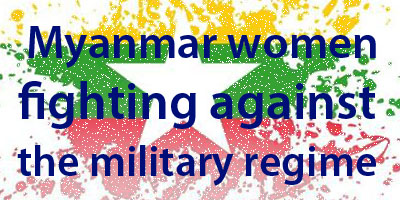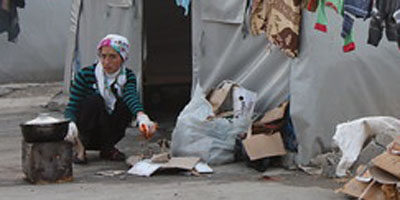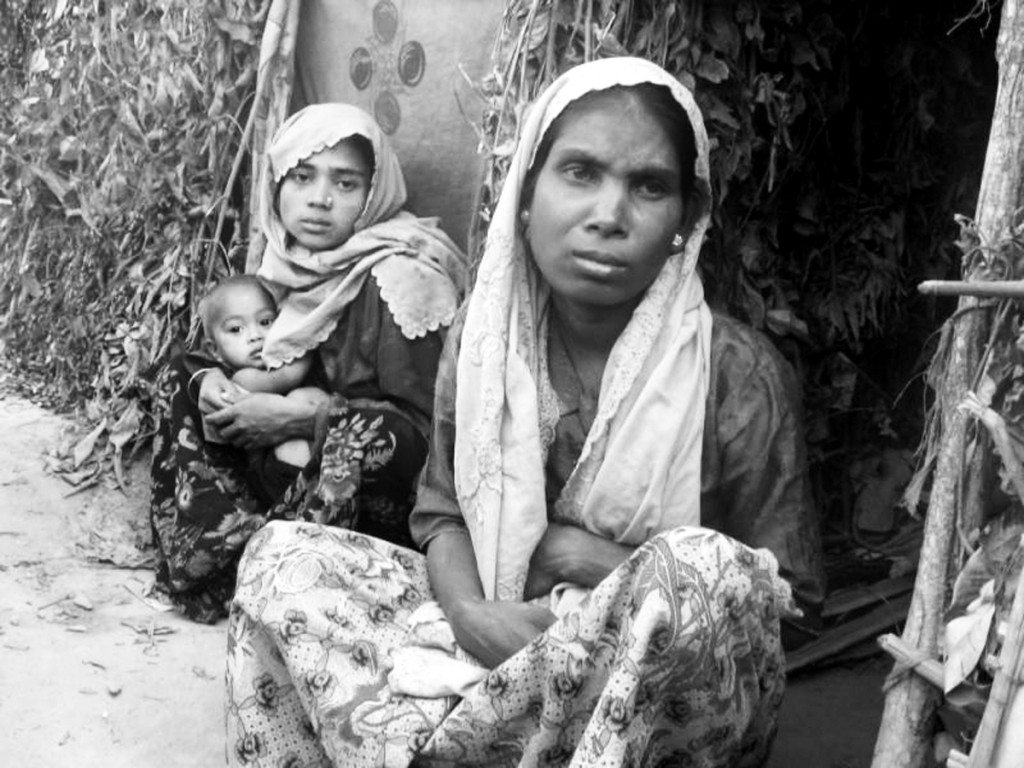
Under Myanmar’s 1982 citizenship law, Rohingya children – both registered and unregistered – are stateless and face limited access to food and health care. Many are prevented from attending school and used for forced labour, contributing to a Rohingya illiteracy rate of 80 percent. More than 60 percent of children aged between five and 17 have never enrolled in school. Photo: Digital Media
On August 8th, 1988 thousands of Burmese poured into the streets calling for democracy. Soldiers opened fire at the unarmed golden-robed Buddhist monks, students, professionals, women, and children. The shooting didn’t stop for ten days, but the people kept flooding the streets in protest. As many as 10,000 people were killed, thousands more were arrested, and many were tortured.
Nur Hashim Salim, co-founder of the Canadian Burmese Rohingya Organization (CBRO), was one of the protestors. A high school student at the time, he feared for his life especially because he belongs to the Rohingya ethnic minority, a marginalized Muslim community in the north-western part of the country. Denied citizenship rights and persecuted by the military, he went into hiding. His parents were detained and tortured for weeks to reveal his location, and so he fled to Bangladesh to save his life.
Salim worked illegally as a math and English tutor for three years until he reunited with his family at a Bangladeshi refugee camp, joining 250,000 fellow Burmese-Rohingyas who had escaped from the military regime.
Many were forcibly repatriated shortly after. Those who refused to go back, including Salim and his family, were kept in designated camps where they lacked basic necessities and were abused by the Bangladeshi camp authorities.
Salim says that the eight family members stayed in an 8×10 foot room made of bamboo roofed by plastic sheets.
“Food was very limited. They gave us only three kilos of rice per person per week, oil, blended food, salt, and sugar. We never had meat, fish or vegetables. I was inhumanly treated and harassed many times by camp authorities to compel me to go to back to Myanmar.
“The police and armed forces surrounded the camp. Refugees were not allowed to go out or enter into the camp without permission of the authorities. Every night, the camp officials did head counts in every shed. If any refugee was caught out of the camp by the police, he or she was sent to jail. If any refugee was caught by the local people out of the camp, he or she was robbed, beaten up, and handed over to the police. The refugee life is as bitter as gall.”
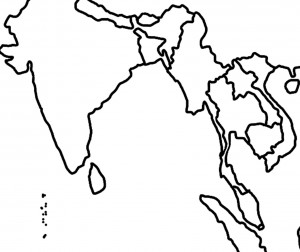
About 800,000 Rohingya live in Burma, mostly in northern Rakhine State. 300,000 live without citizenship in Bangladesh, Malaysia, India and elsewhere.
In 2006, after having lived in Bangladesh for fifteen years, Salim was the first person selected by the Canadian government for resettlement. With his family, he finally arrived in Kitchener in March, 2008. Now, as part of the Canadian Burmese Rohingya Organization, Salim advocates for the human rights of the more than one million stateless Rohingya around the world.
Life in Burma
The choice to flee Burma to a life as unwanted aliens in neighbouring Thailand, Bangladesh or even further in Malaysia is not taken lightly, but the Rohingyas’ living situation in their native country gives them little alternative.
According to Refugees International, Burma hosts about 800,000 Rohingyas without Burmese citizenship. They live in the densely populated Northern Rakhine State, the poorest region of an already impoverished country.
Their stateless status keeps their children from attending school. The government denies them access to basic public services such as health, water, and sanitation, restricts their freedom of movement and their marriage rights, displaces them without compensation, and often forces them to work for no pay.
The United Nations Refugee Agency says that about 300,000 Rohingyas now live outside of Burma in a stateless existence. They often try to escape the country in boat or by foot. Those already in neighbouring countries say that they have little prospects of returning home as long as the army runs the country. Many have left family and loved ones behind in their exile.
The origins – why are they stateless?
The Rohingya have always occupied a marginal position in Burma.
Brought by the British as labourers during the colonial era, they formed large communities of Bengali-speaking Muslims near the border of the country abutting Bangladesh. After independence, they came to be seen by the Burmese government as a secessionist threat. The 1962 coup brought decades of military rule and persecution.
The first Rohingya exodus took place in 1978, with a military offensive called “Operation Dragon King,” a campaign aimed at “foreigners” accused of filtering illegally into the country. It brought widespread killing, destruction of mosques and religious persecution. More than 200,000 Rohingyas tried to flee into Bangladesh; an estimated 10,000 of them died from starvation and disease in their attempt.
In 1991, a second wave of more than 250,000 Rohingyas escaping persecution crossed the land and river borders into Bangladesh. Those who made it were housed in twenty refugee camps in south-eastern Bangladesh. Most were eventually forced to return home. Today, 28,000 of them remain, recognized as registered refugees in the two remaining camps.
No place to call home
The Bangladeshi government wants the Rohingya out of the country. Lynn Yoshikawa, advocate for the US-based group Refugees International, says that those who have returned to Burma were coerced by Bangladeshi authorities. “Most of those people did not want to go back, and were forced to return. They didn’t think they had a choice.”
For those who manage to stay, life is not easy.
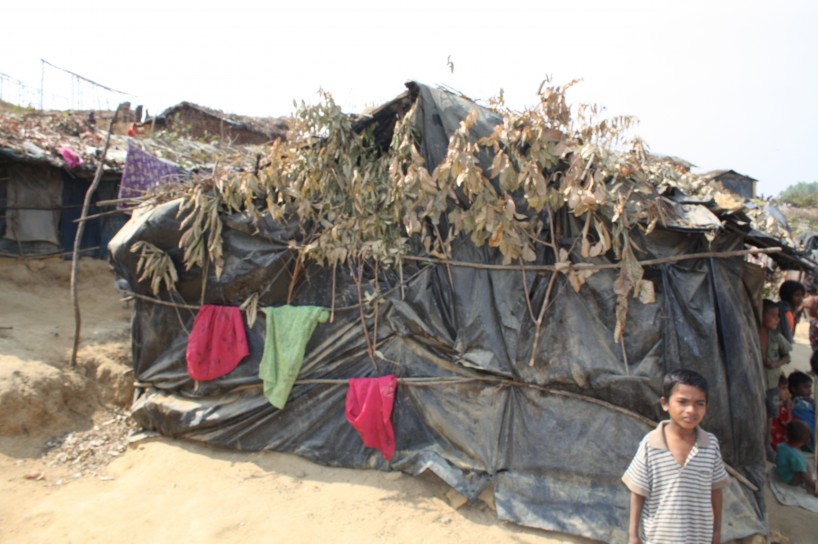
An estimated 40,000 Rohingya children are believed to be unregistered in Myanmar. The requirement of government authorization for marriage and a two-child policy have made children evidence of unregistered marriages, an act punishable by prison. Third and fourth children who are unregistered are limited for life – unable to travel, attend school or marry.
Both registered and unregistered children are stateless and face limited access to food and health care, leaving them susceptible to preventable diseases and malnutrition. Many are prevented from attending school and used for forced labour. Photo of boy at refugee camp by David Swanson/IRIN.
In Bangladesh, registered Rohingya refugees live in UN camps, while unregistered ones live in neighbouring host communities or in unofficial camps. The Bangladeshi government denies permits to aid agencies and host communities to assist unregistered refugees, and only allows the UN Refugee Agency and a few other NGOs to work with registered refugees in official camps.
Registered refugees receive basic health services, primary education, and food rations in the UN-run official camps, but those unregistered are barred from receiving food. Refugees International says that at least 200,000 undocumented Rohingyas live in unofficial refugee settlements and local villages, and that despite reports of malnutrition rates in those areas double the emergency threshold, lifesaving activities targeting unregistered refugees are not authorized.
Yoshikawa has visited the unofficial Rohingya camps and the neighbouring villages. “Unregistered people survive by working illegally, taking the worst jobs and getting paid half or a third of what a Bangladeshi worker would get paid,” she said. “People are begging, children are begging. People go to collect firewood to sell. They collect garbage, anything to survive. They are the lowest of the low in Bangladesh.”
Even though registered Rohingya refugees get basic services in official camps, there are problems of sexual abuse and trafficking of women and children, according to the UN Refugee Agency. Movement is restricted, and the refugees’ housing is overcrowded and badly in need of repair as heavy rains damage shelters and spread disease.
Children make up 65% of the camp population; many of them were born there. But the Bangladeshi government only allows them partial primary education, in the Burmese language which is not the children’s mother tongue. Many speak Bengali, the national language, but the Bangladeshi authorities do not want Rohingya children to be educated in Bengali because they view this as a first step towards integration in their asylum country.
Many Rohingya people seek refuge in other countries.
In Malaysia the UN has had some success in protecting them from deportation, so thousands have taken the journey there across the Andaman Sea. But if the boats are intercepted by the Thai navy in its territorial waters, the people are often sent adrift or kept in detention centres with inadequate food, unclean water and little medical attention.
On January 2009, Thailand’s military was accused of towing 91 Rohingya boat people far out to sea before abandoning them to their fate with little food or water in boats without engines. This was not the first and only time that it happened. “Previously, when found at sea, the government had towed them out basically to die,” Yoshikawa told me.
There is a concern that the pressing conditions of the Rohingya in Burma and Bangladesh have made undertaking this journey even more attractive over the years. “This year we’re actually hearing that the boats were leaving during monsoon season when the seas are very dangerous. This is quite unusual. People usually leave in November and December when the seas are much calmer,” Yoshikawa said. “There’s a concern that people are already leaving so soon.”
Responses from the UN and from Canada
With the agreement of the Burmese government, the UNHCR established an operation in the south of the country, but access to large parts of northwestern Burma remains a challenge. The Rohingya villages are remote and roads to get there are in poor conditions or nonexistent. There are security constraints in these areas, and the government limits the number of organizations allowed and what they can do.
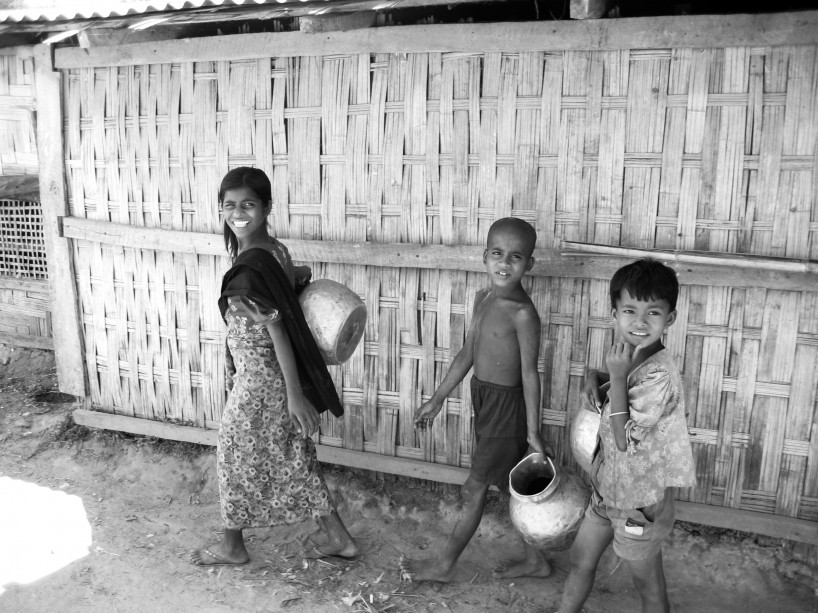
27% of Rohingya children in the Kutu Palong makeshift refugee camp are malnourished. The new government of Myanmar has engaged in a series of reforms toward democratisation, but Rohingya people are disappointed that little has actually changed for them. Forced labour, marriage restrictions, restrictions on movement and arbitrary arrests continue. Photo courtesy Refugees International.
According to Refugees International, it will take more than aid to solve the Rohingya’s problems. “Regardless of the aid that could be provided, what most Rohingyas told us when we met them was that it wasn’t necessarily because their families did not have what to eat that they felt oppressed,” Yoshikawa said. “It was that they were living in constant fear. It’s much more about their rights than actually about their poverty. Their poverty is a symptom of their lack of rights. At the end of the day they feel as if they are barely human.”
Since 2006, fewer than a thousand refugees have been resettled in Canada, Australia, UK, Ireland, New Zealand, USA, Sweden and Norway.
Canada has received 309 Rohingya refugees, making it not only the most generous recipient but also the first Western country to do so. “Refugees were resettled in 2006 and 2007 in Ontario; and in 2008 the province of Quebec agreed to accept about 150 Rohingya refugees,” according to Julie Lafortune, communications advisor for Citizenship and Immigration Canada.
However, no Rohingya have been resettled in Canada since 2009, when the Bangladeshi government froze the resettlement program. The Canadian Burmese Rohingya Organization is asking the government of Canada to resume the resettlement of refugees and to advocate for their human rights internationally.




